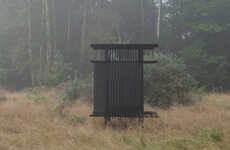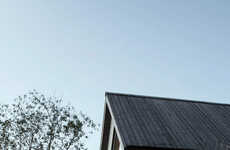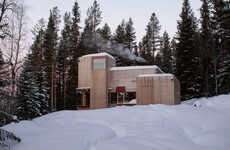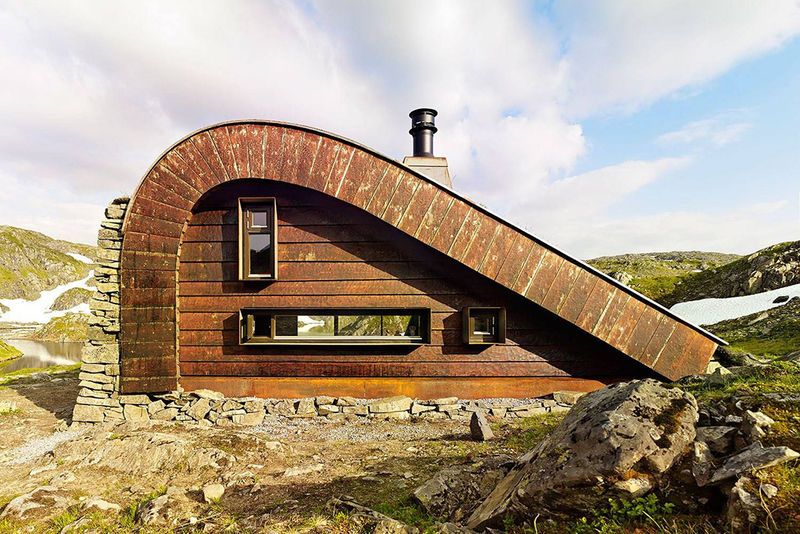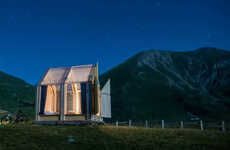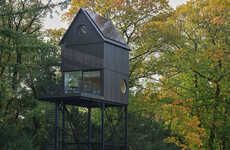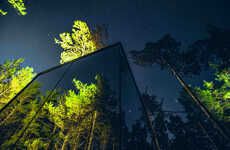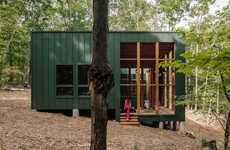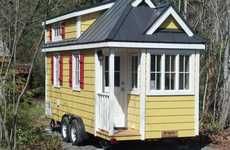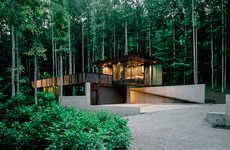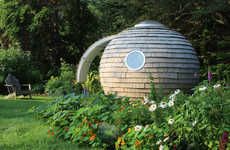
This Miniature Hunting Lodge is Integrated into the Natural Landscape
Katherine Pendrill — September 10, 2015 — Eco
References: snohetta & hiconsumption
Snohetta recently designed a miniature hunting lodge that is fully integrated into the natural landscape. When hunting in the wilderness, proper camouflage is key for success and this tiny cabin is designed to remain fully hidden from wild creatures and other humans.
The compact cabin is nestled within the western mountains of Norway and runs parallel to the Akrafjorden Fjord. The hunting lodge features a steel beam construction that allows its ceiling to be covered in timber. The roof is then covered with green moss, allowing it to disappear into the natural landscape. The unique design means that the cabin remains hidden from any planes or helicopters that may be flying overhead.
Even for those who are not interested in hunting, the unique cabin provides a way to spend some time fully immersed in nature.
The compact cabin is nestled within the western mountains of Norway and runs parallel to the Akrafjorden Fjord. The hunting lodge features a steel beam construction that allows its ceiling to be covered in timber. The roof is then covered with green moss, allowing it to disappear into the natural landscape. The unique design means that the cabin remains hidden from any planes or helicopters that may be flying overhead.
Even for those who are not interested in hunting, the unique cabin provides a way to spend some time fully immersed in nature.
Trend Themes
1. Camouflaged Architecture - Opportunity for architecture firms to design unique and eco-friendly buildings that blend into their surroundings for sustainable living.
2. Discreet Design - Opportunity for product designers to create objects that are hidden in plain sight to provide security and privacy in public spaces.
3. Nature-inspired Interiors - Opportunity for interior designers to incorporate natural materials and colors to create calming and sustainable living spaces.
Industry Implications
1. Architecture - Architects can explore eco-friendly and sustainable strategies to design buildings that blend into their surroundings and leave minimal impact on the environment.
2. Product Design - Product designers can create discreet and hidden products that provide security and privacy in public spaces.
3. Interior Design - Interior designers can use natural materials and colors to create sustainable living spaces that promote wellness and reconnect humans with nature.
6.2
Score
Popularity
Activity
Freshness


